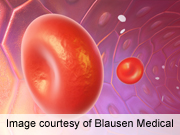Teen developed blood disorder after using Aczone for a week
FRIDAY, Jan. 30, 2015 (HealthDay News) — Use of topical dapsone may have led to the development of methemoglobinemia, according to a case study published in the Jan. 29 issue of the New England Journal of Medicine.
A 19-year-old woman who had used Aczone — the skin gel version of the drug dapsone — for a week developed methemoglobinemia. The patient arrived at a Pittsburgh emergency room with a headache, shortness of breath, and blue lips and fingers. Her symptoms initially confounded her doctors. Although she had applied a “pea-sized” amount of Aczone to her skin twice daily for seven days before seeking care, she never mentioned that when asked if was using any medications.
The authors of the report note that prior research has shown that dapsone pills, in very rare instances, can trigger methemoglobinemia. But the current case appears to be the first time that this condition has been associated with Aczone, the skin gel version of dapsone.
Allergan, the maker of Aczone, commented on the findings in the same journal issue. “Acquired methemoglobinemia is a rare complication after exposure to certain topical anesthetic agents and oral antibiotic agents, including oral dapsone, but was not seen in clinical trials of topical dapsone,” the company said in a statement. “Although methemoglobinemia appears to be rarely associated with Aczone 5 percent gel, it has been listed as an adverse drug reaction in the Allergan reference safety materials in order to create awareness among patients and prescribers.”
Full Text
Copyright © 2015 HealthDay. All rights reserved.








